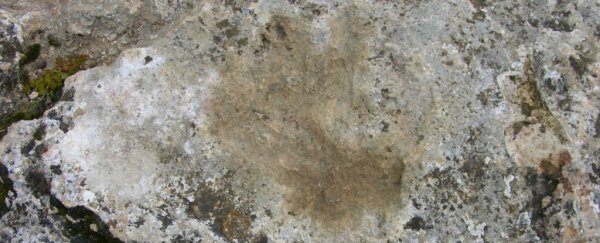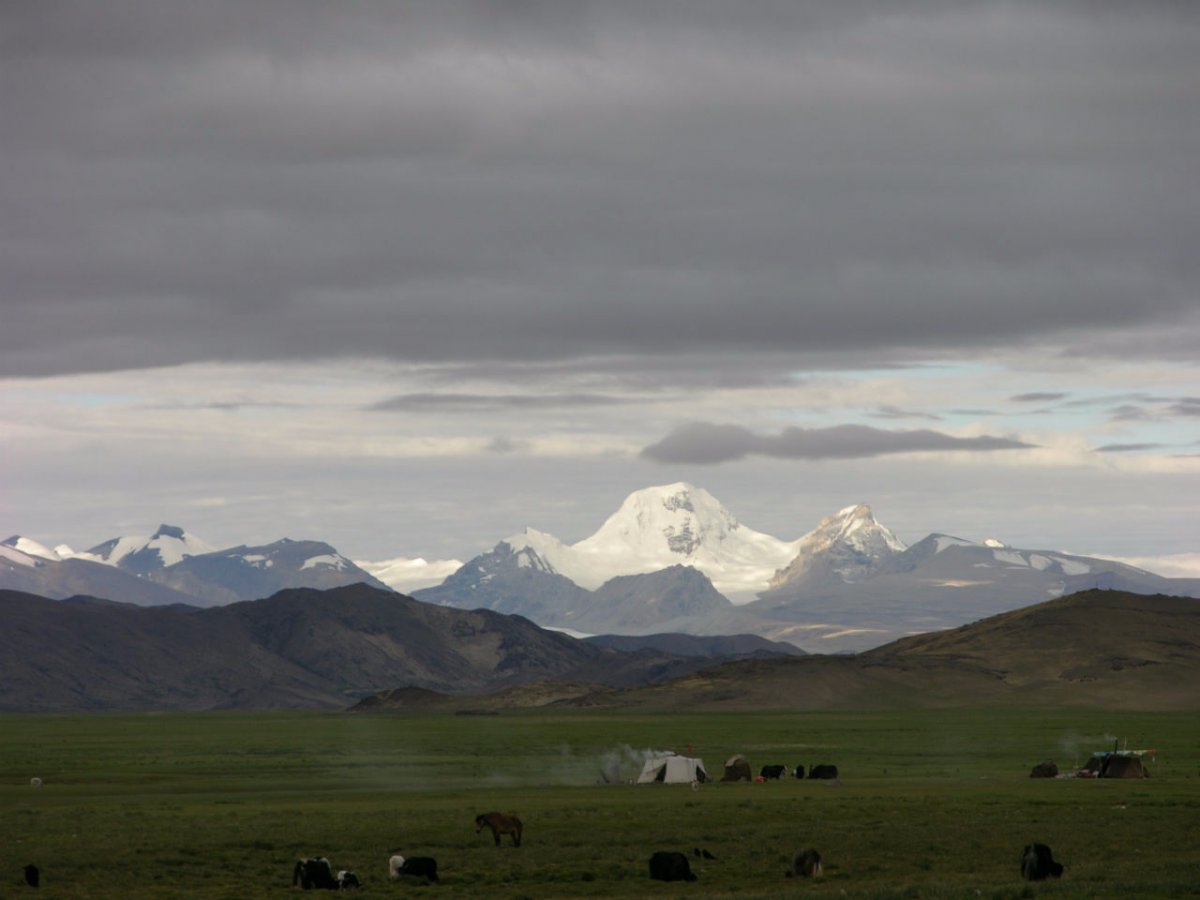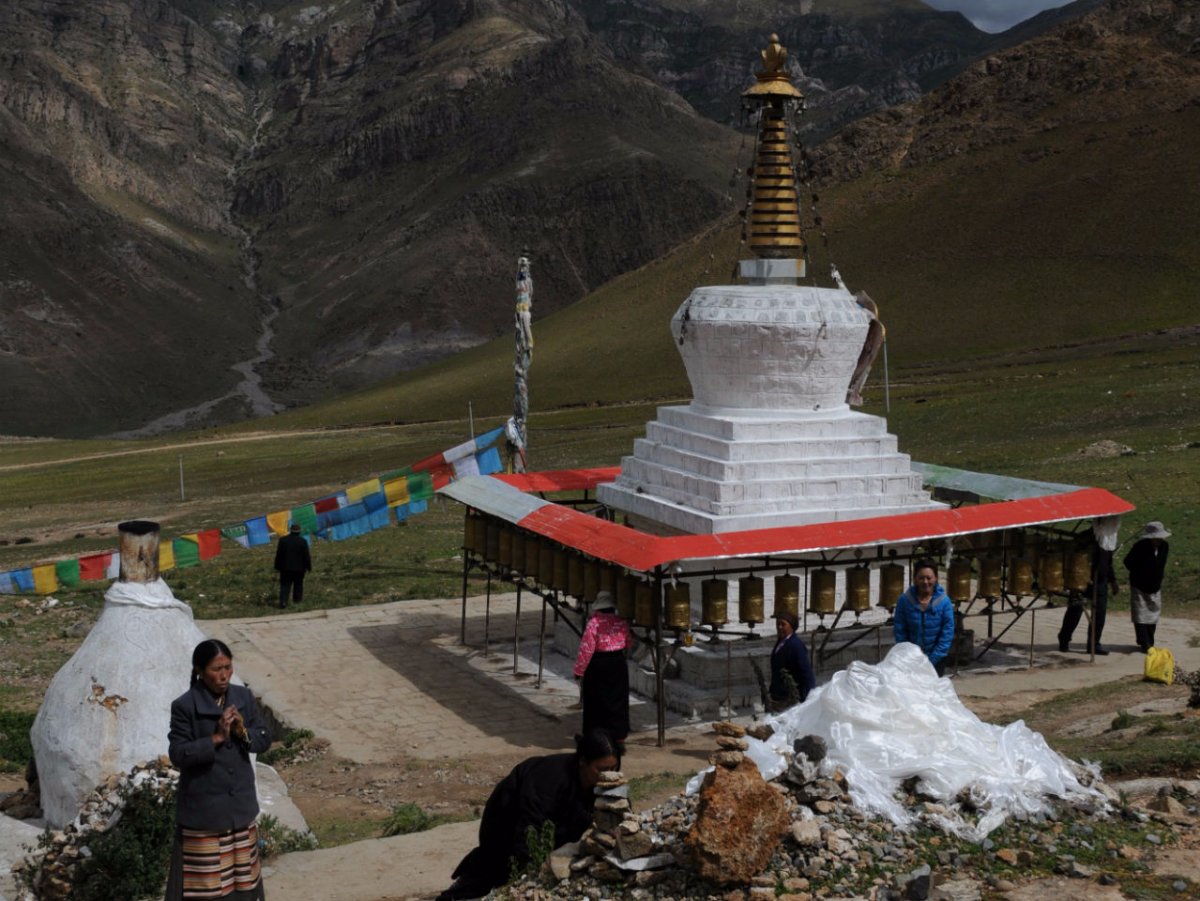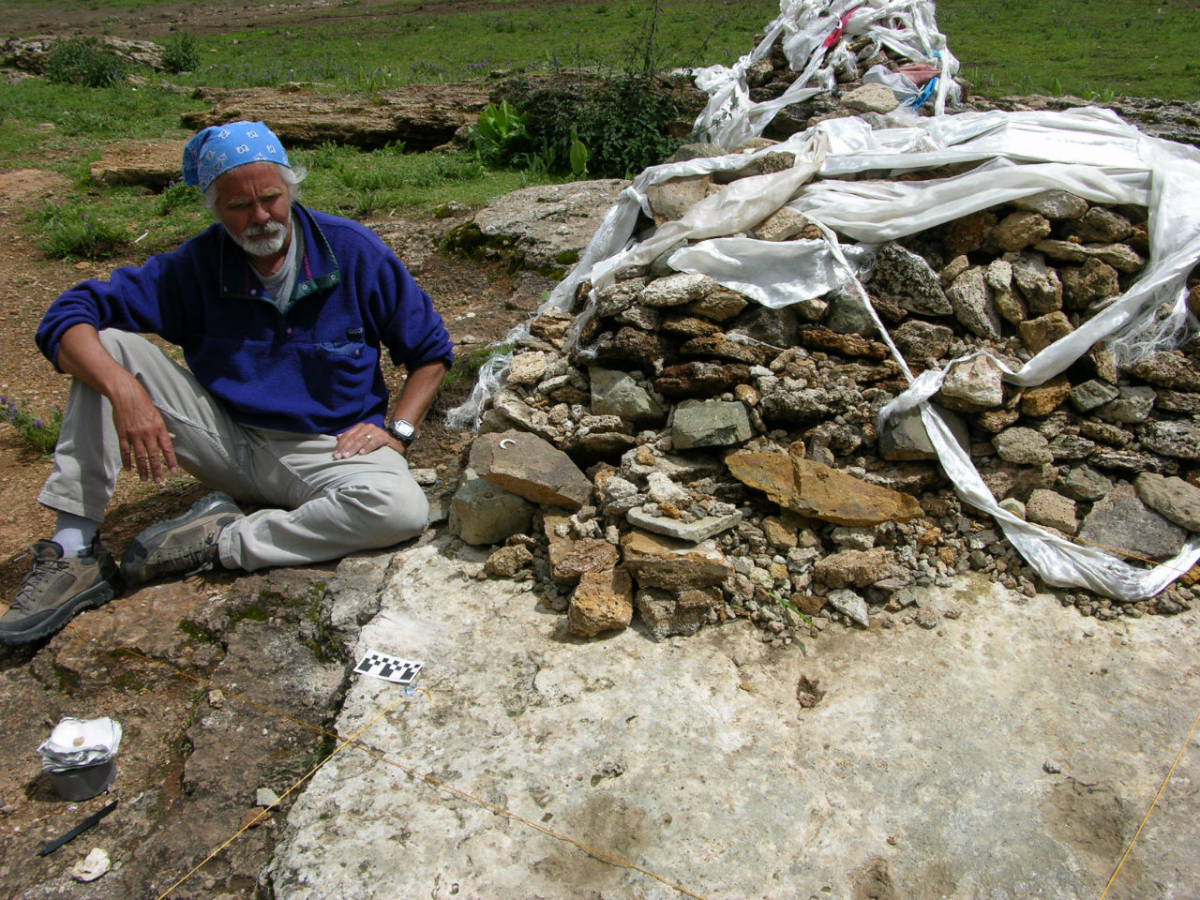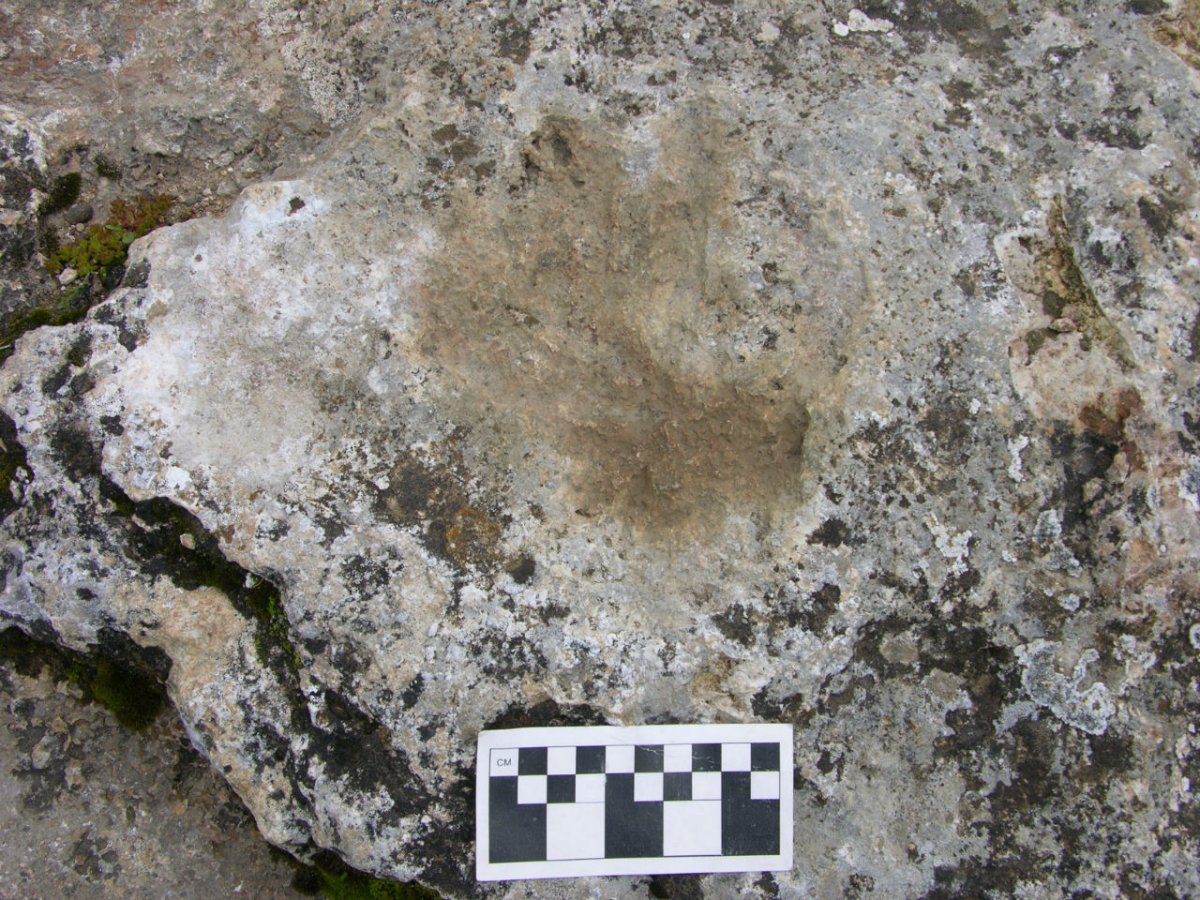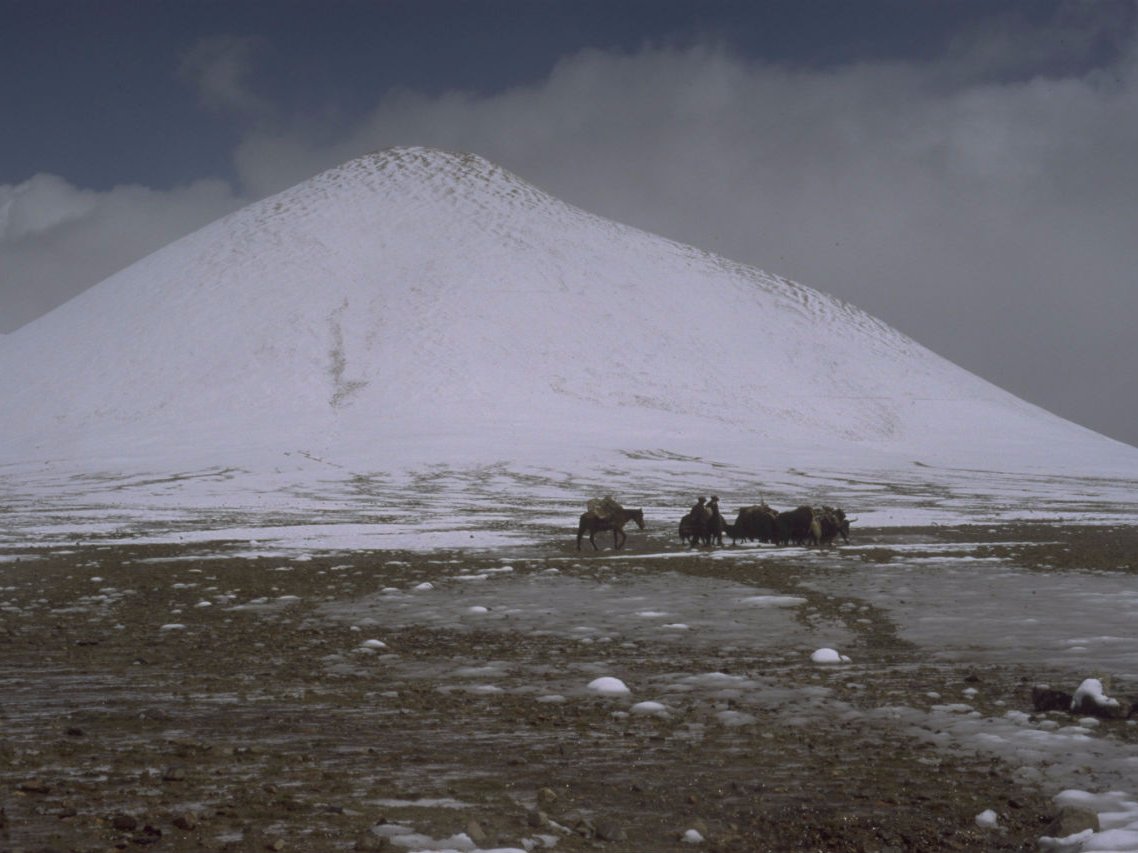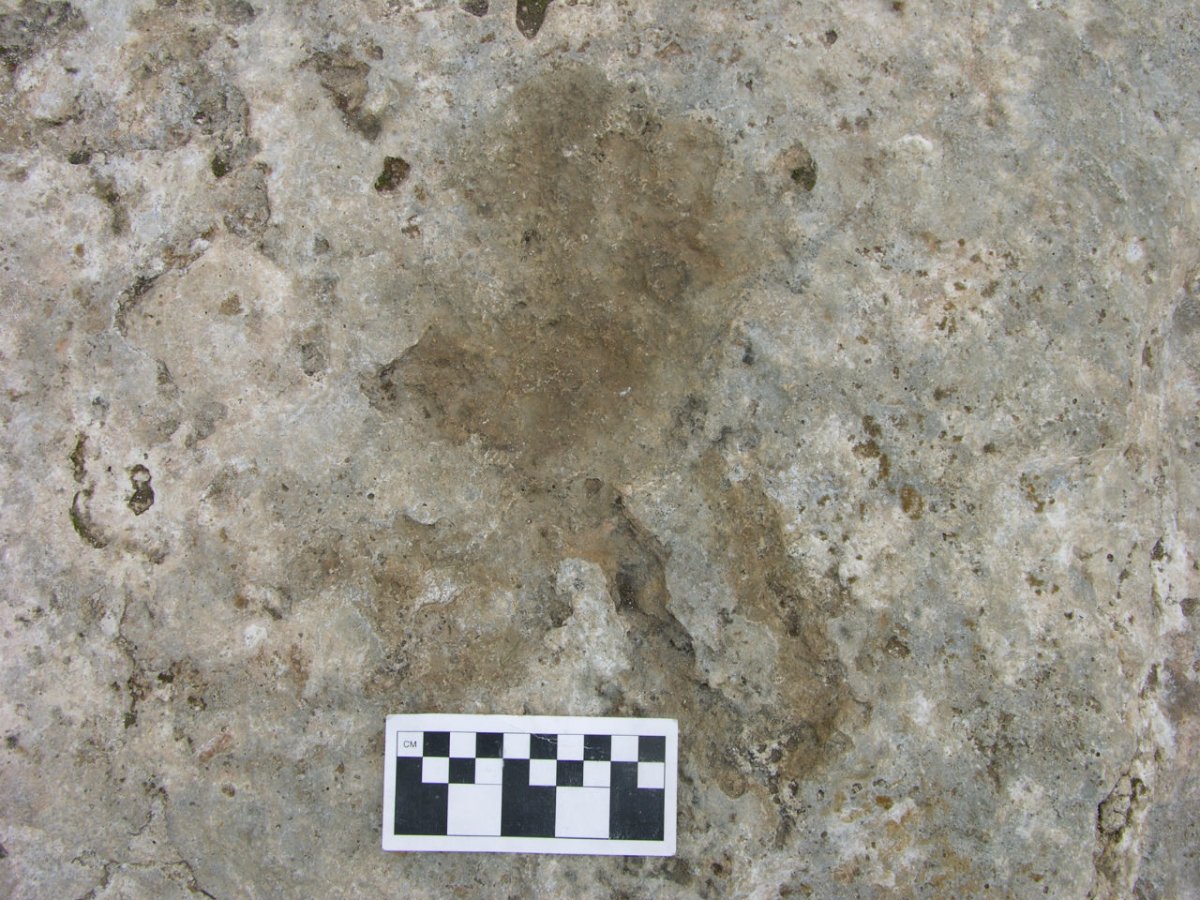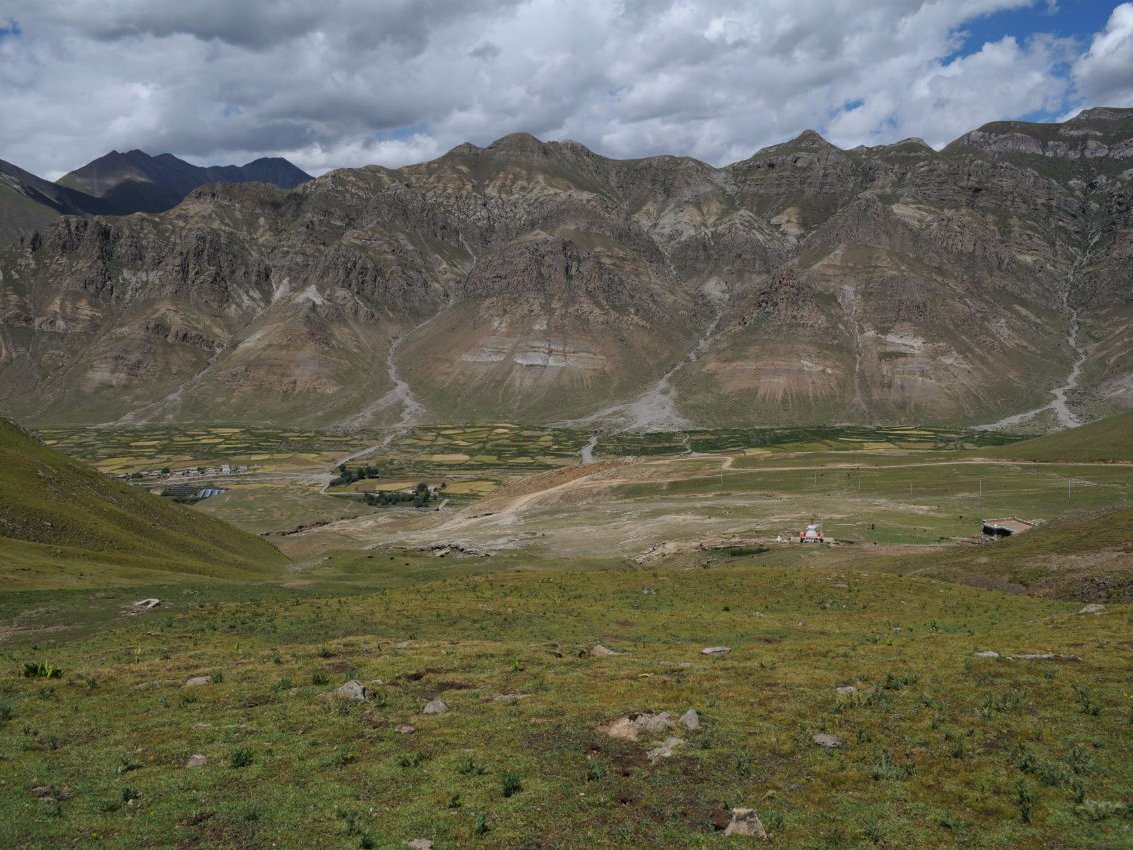An international research team has looked at human hand-and-footprints found in 1998 in Tibet and dated them to between 7,400 and 12,600 years old.
The prints were found in the Himalayan mountains, and now researchers have estimated that they were made by people thousands of years after they initially thought.
The findings were published in the journal Science.
The prints were left in fossilised hot spring mud near what is now the Tibetan Monastery of Chusang.
Scientists initially believed that they were made some 20,000 years ago by people living in the area.
The discovery was made near this chorten, or Buddhist shrine. The prints were not easy to spot, as they have been repeatedly smoothed and polished by pilgrims travelling to the site.
The new finding suggests that people made these prints much more recently - anywhere between 7,400 and 12,600 years ago.
Genetic studies back up this hypothesis, since they suggest that a permanent population at the site dates to at least 8,000 to 8,400 years ago.
To date the prints this time, researchers used thorium and uranium sampling.
They also performed radiocarbon dating of nearby plant remains, along with a technique called optically stimulated luminescence, which gave them the date of quartz crystals in the sedimentary rock layer where the prints were discovered.
To reach Chusang from ground level, researchers estimate it would have taken people roughly 28 to 47 days - a pretty long journey!
The region was wetter and more humid back then than it is today, which would have helped the people survive there.
The new dating still makes the prints one of the oldest reliably dated archaeological sites on the Tibetan Plateau.
The new research also suggests that the people who lived here settled in the area permanently rather than temporarily.
Because high-elevation environments like Chusang are some of the most recent places people colonised, they "offer something of a natural laboratory for studying human adaptation", said Randy Haas, an anthropological archaeologist at the University of Wyoming.
This article was originally published by Business Insider.
More from Business Insider:
